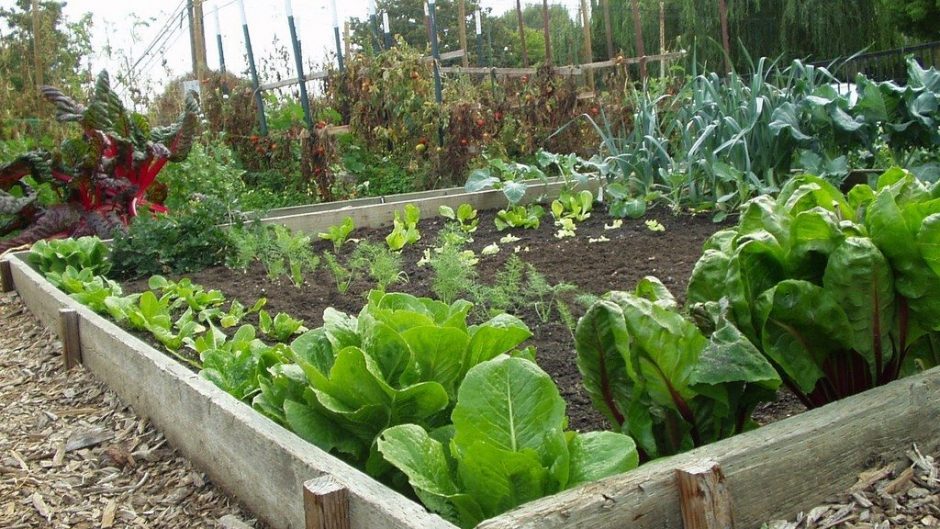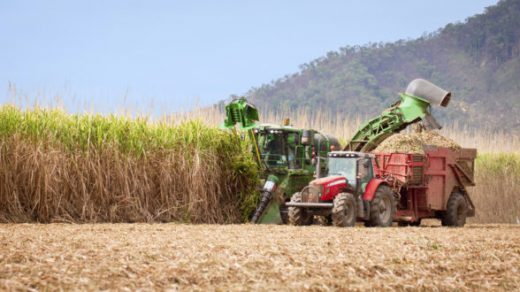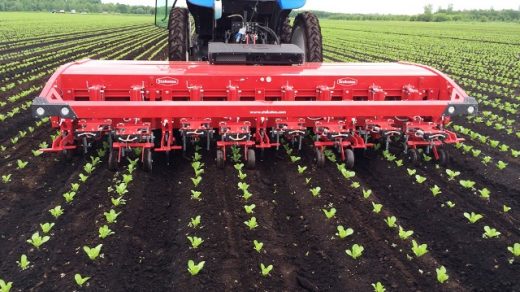100 pounds of tomatoes from only 100 square feet. Twenty pounds of carrots from 24 square feet. Tasty vegetables from a 15-by-20-foot plot. In all honesty, it’s not difficult to develop your own vegetable nursery with yields of this nature. All that is required is some persistence and brilliant strategies to take advantage of your nursery space. Follow these tips and deceives to design the vegetable planting you had always wanted.
Develop a practical plan.
The initial step to growing a sound nursery is separating precisely where you need the beds to go. Think about the size, shape, and area of your nursery to sort out the best set-up for you. Remember that it can generally be changed over the long run if vital.
Plant In Raised Beds With Rich Soil.
Master cultivators concur that developing the dirt is the absolute most significant factor in siphoning up yields. A profound, naturally rich soil energizes the development of sound, broad roots ready to arrive at more supplements and water. The outcome: extra-lavish, extra-beneficial development over the ground. The quickest method to get that profound layer of rich soil is to make raised beds. Raised beds yield up to multiple times more than similar measure of room planted in lines. That is expected not exclusively to their free, prolific soil yet in addition to productive separating. By utilizing less space for ways, you have more space to develop plants.
Raised beds spare you time, as well. One analyst followed the time it took to plant and keep up a 30-by-30-foot garden planted in beds, and found that he expected to go through only 27 hours in the nursery from mid-May to mid-October. However he had the option to collect 1,900 pounds of new vegetables. That is a year’s flexibly of nourishment for three individuals from around three all out long periods of work! How do raised beds spare so much time? Plants develop close enough together to swarm out contending weeds so you invest less energy weeding. The nearby dividing additionally makes watering and reaping more effective.
Round Out The Soil In Your Beds.
The state of your beds can have any kind of effect, as well. Raised beds become more space-proficient by delicately adjusting the dirt to frame a circular segment. An adjusted bed that is 5 feet wide over its base, for example, could give you a 6-foot-wide bend above it. That foot probably won’t seem like a lot, however duplicate it by the length of your bed and you’ll see that it can have a major effect in all out planting zone.
In a 20-foot-long bed, for instance, mounding the dirt in the center builds your absolute planting zone from 100 to 120 square feet. That is a 20% addition in planting space in a bed that takes up a similar measure of ground space. Lettuce, spinach, and different greens are ideal yields for planting on the edges of an adjusted bed.
Consider Worm Castings.
Worm castings, a.k.a. crap, are a characteristic compost that can invigorate plant development. It likewise assists soil with holding water, which is key for a solid vegetable nursery. Work in the worm castings as you turn and separate clusters of soil. In case you’re not seeing a ton of night crawlers in your dirt effectively, be liberal with the castings. Your neighborhood garden store can offer direction on the amount to add.
Aim To Plant Crops In Triangles Rather Than Rows.
To get the most extreme yields from each bed, focus on how you orchestrate your plants. Try not to plant in square examples or columns. All things being equal, amaze the plants by planting in triangles. Thusly, you can fit 10 to 14% more plants in each bed. Simply be mindful so as not to space your plants too firmly. A few plants won’t arrive at their full size — or yield — when swarmed. For example, when one analyst expanded the separating between romaine lettuces from 8 to 10 inches, the reap weight per plant multiplied. (Recollect that weight yield per square foot is a higher priority than the quantity of plants per square foot.) Excessively close dividing can likewise pressure plants, making them more helpless to infections and bug assault.
Try Climbing Plants To Make The Most Of Space.
Regardless of how little your nursery, you can develop more by going vertical. Develop eager for space vining crops, for example, tomatoes, post beans, peas, squash, melons, cukes, etc—straight up, upheld by lattices, fences, enclosures, or stakes. Developing vegetables vertically additionally spares time. Gather and upkeep go quicker on the grounds that you can see precisely where the organic products are. Parasitic illnesses are likewise more averse to influence upward-bound plants s on account of the improved air dissemination around the foliage. Have a go at developing vining crops on lattices along one side of raised beds, utilizing durable end posts with nylon work mesh or string in the middle of to give a climbing surface. Bind the developing plants to the lattice. Yet, don’t stress over making sure about hefty organic products. Indeed, even squash and melons will create thicker stems for help.
Choose The Right Pairings.
Interplanting viable yields spares space, as well. Think about the exemplary Native American blend, the “three sisters:” corn, beans, and squash. Tough cornstalks uphold the post beans, while squash develops uninhibitedly on the ground underneath, concealing out contending weeds. Other viable blends incorporate tomatoes, basil, and onions; leaf lettuce and peas or brassicas; carrots, onions, and radishes; and beets and celery.
Know How To Time Your Crops Well.
Progression planting permits you to develop more than one harvest in a given space throughout a developing season. That way, numerous nursery workers can gather three or even four harvests from a solitary zone. For example, follow an early harvest of leaf lettuce with a quick developing corn, and afterward develop more greens or overwintered garlic — all inside a solitary developing season. To take full advantage of your progression plantings:
- Use transfers. A transfer is now a month or so old when you plant it, and develops that a lot quicker than a seed planted legitimately in the nursery.
- Pick quick developing assortments.
- Recharge the dirt with a ¼-to-½-inch layer of manure (around 2 cubic feet for every 100 square feet) each time you replant. Work it into the main few creeps of soil.
Covering The Beds To Extend Your Season.
Adding half a month to each finish of the developing season can get you sufficient opportunity to develop one more progression crop — state a planting of leaf lettuce, kale, or turnips — or to gather more finish of-the-period tomatoes. To get those additional long stretches of creation, you have to keep the air around your plants warm (in any event, when the climate is cold) by utilizing mulches, cloches, column covers, or cold edges.
Or then again give heat-cherishing crops, (for example, melons, peppers, and eggplants) an extra-solid beginning in the spring by utilizing two “covers” — one to warm the air and one to warm the dirt. Around six to about two months before the last ice date, preheat cold soil by covering it with either infrared-sending (IRT) mulch or dark plastic, which will assimilate heat.
At that point, cover the bed with a slitted, clear plastic passage. At the point when the dirt temperature arrives at 65 to 70 degrees Farenheit, set out plants and cover the dark plastic mulch with straw to shield it from catching an excess of warmth. Eliminate the reasonable plastic passage when the air temperature warms and all threat of ice has passed. Introduce it again toward the finish of the period when temperatures cool.
But Remember The Cons Of Mulching The Seed Beds With Straw.
One disadvantage of straw mulch is that it gives a safehouse to slugs during the day. Suze Bono, a cultivated rancher, likes to hand take them out around evening time with a headlamp and a tub of foamy water to throw them into. Buddy planting with alliums, which normally avert slugs, is additionally a smart thought.




Interesting perspective. I found it to shed light on a post that was nice to read. I am excited for more great posts by your blog.